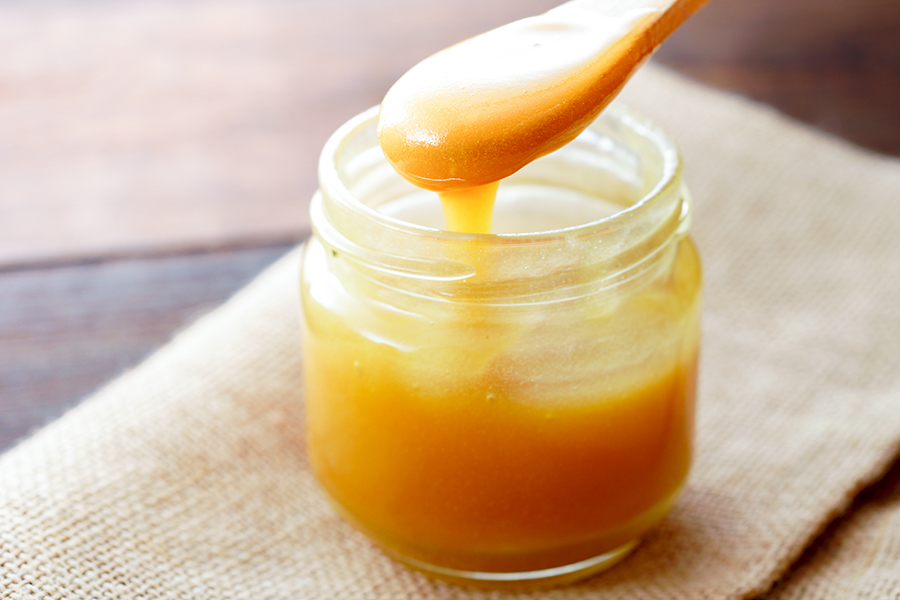How To Use Honey For Wound Care
Posted by Renee Reintzel on Nov 25th 2025

How To Use Honey For Wound Care
Honey - that sweet, gooey substance created by bees to nourish bee colonies – has fascinating characteristics. It has a low moisture content, high sugar concentration, and inherent enzymes that suppress bacterial growth. Honey’s antibacterial and antifungal properties are one of the reasons properly-stored honey will not spoil. These properties are also why honey has been used to treat wounds for thousands of years.
Honey for wound care is very beneficial because it can be utilized within wound dressings to reduce or arrest the growth of a wide range of bacteria which are commonly found in wound beds. While this may be the oldest-known wound dressing, scientists only recently have been able to explain how the substance’s enzymes and unique properties play a role in wound healing.
How does honey help wounds heal?
Acidic pH
In order to talk about the healing benefits of honey, we need to talk about skin. Skin’s optimal pH value ranges between 4.7 and 5.75, depending on the area of the body. Compared to the neutral pH of 7 (that of pure water), the pH of skin is mildly acidic. This natural “acid mantle” helps keep moisture inside our bodies and bacteria out.
Honey has a low pH (3.2-4.5), which is more acidic than our skin. Although it is often considered “alternative therapy,” when applied to a wound, this acidity creates a more challenging environment for microbes to thrive. Honey for wound care increases the release of oxygen from the blood, and discourages the growth of harmful proteases.
Osmotic Effect
In order to survive, bacteria need water. Honey’s naturally low water content and inherently high sugar content has a natural osmotic effect: it draws water out of damaged tissues. By pulling the water out of existing bacteria in a wound, honey damages the internal structures of the bacteria cells.
Honey has been shown to have an antimicrobial effect on bacteria or fungi commonly present in wounds, such as methicillin-resistant Staphylococcus aureus (MRSA) and vancomycin-resistant Enterococci (VRE). Although the mechanism isn’t fully understood, honey’s osmotic effect may be partly responsible.
Nourishing Micronutrients
Honey also forms a protective barrier, preventing healthy natural moisture from leaving the wound. At the same time, micronutrients in honey nourish the injured tissues and promote healing.
Can I use store bought honey on a wound?
In a word: no. While all honey has some beneficial properties, not all honey is the same. The antibacterial quality of honey depends on the type of honey, as well as when and how it's harvested. Some kinds of honey may be 100 times more potent than others.
A honey variety known as Manuka honey contains antibacterial agents in greater concentrations than other honeys, as well as several other distinct compounds that make it uniquely well-suited for healing. Manuka honey is found in Australia and New Zealand, created by bees that pollinate the native leptospermum scoparium bush (also known as a tea tree).
A significant antibacterial component in Manuka honey is a compound called methylglyoxal (MGO). MGO comes from the conversion of another compound in Manuka honey known as dihydroxyacetone (DHA), a high concentration of which is found in the nectar of Manuka flowers. The higher the concentration of MGO, the stronger the antibacterial effect.
More importantly, not all honey is sterile. Unlike the honey in your cupboard, medical honey for wounds is a sterile product that has been formulated and processed for safety. This means it is also less likely to cause an immune system reaction.
Can I sterilize my own honey?
No. While heat from typical boiling can kill clostridium botulinum bacteria and the toxins it produces, it will not kill botulism spores in honey. As a result, medical honey is sterilized as part of the manufacturing process using gamma-radiation, rather than heat, before use. This type of sterilization will kill the Clostridium botulinum spores (botulism) that occur in natural honey.
Incidentally, this is also why babies and immune-compromised people are advised to avoid honey. A baby’s digestive tract is not mature enough to resist the bacteria, and the spores can grow, reproduce, and make toxins while living in the infant’s digestive system. Adults with compromised immune systems also may not be able to neutralize the bacteria.
What are the benefits of medical honey?
Medical honey for wounds can help with healing by:
- Treating local wound bed infection.
- Treating burns.
- Treating ulcerated wounds (pressure ulcers, venous ulcers, diabetic ulcers, tropical ulcers, sickle cell ulcers, and malignant ulcers).
- Treating skin grafts, infected donor sites and traumatic wounds.
- Managing peristomal excoriation around ileostomies and colostomies to facilitate epithelialization.
- Slowing the progression of necrotizing fasciitis.
- Reducing bacteria levels in a wound.
- Treating wounds infected with antibiotic-resistant bacteria.
- Treating wounds that do not respond to conventional antibiotic or antiseptic therapy.
- Reducing wound odor caused by high bacteria levels.
- Reducing inflammation in the wound bed.
- Reducing edema or exudate in the wound bed.
- Debriding wounds (assisting with the removal of dead tissue within the wound bed.)
- Soothing wounds and burns, and minimizing scarring.
Honey-Impregnated Dressings
Honey-impregnated dressings are a range of sterile wound dressings impregnated with honey that are applied directly to the wound surface. Honey dressings can vary in appearance due to the different types of materials used. Some may be a seaweed-based sheet or rope, while others may be impregnated gauze or gel or ointment.
Below is a list of some honey-impregnated wound products:
For more information about wound care, explore our wound care articles.

